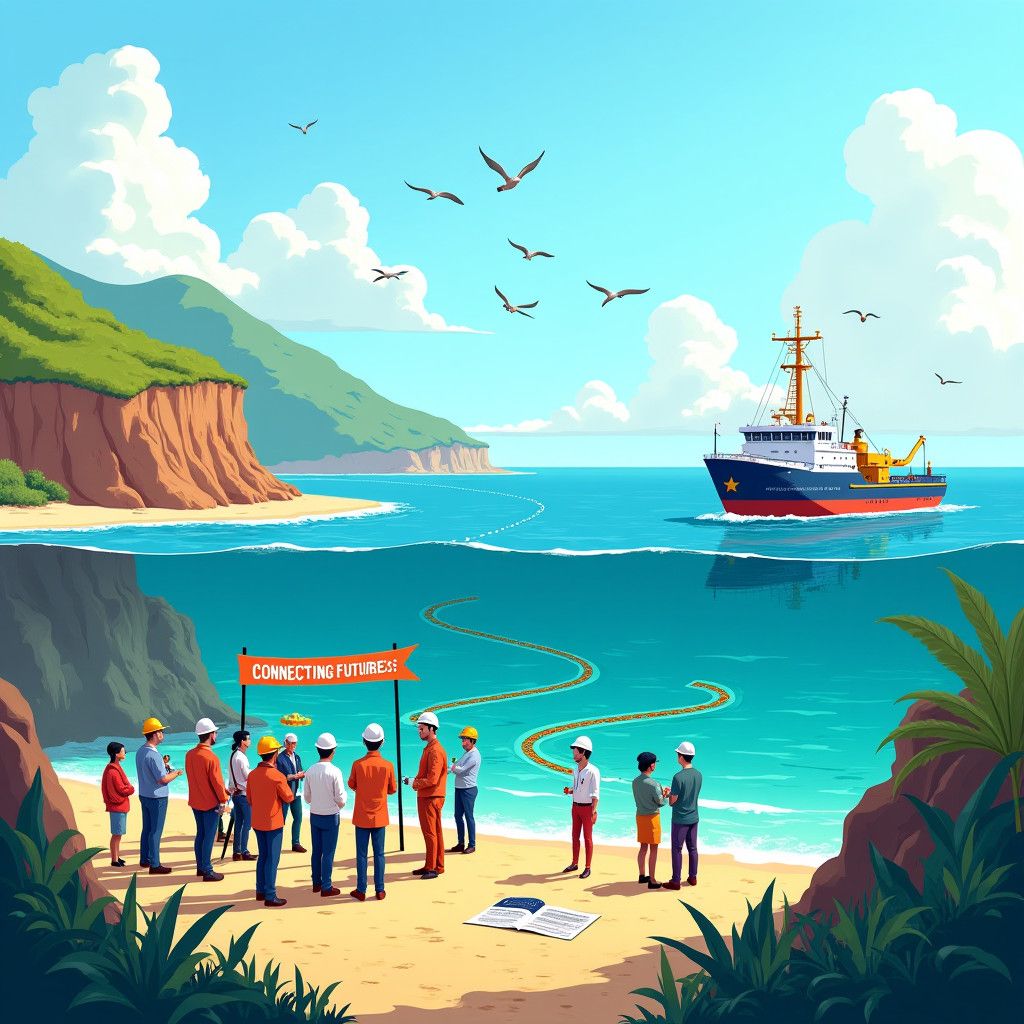In an era defined by technology, Australia is making significant strides to enhance its digital connectivity. The latest development involves the construction of a new subsea cable linking Christmas Island to the Australian mainland. This initiative is a collaboration between Australia and industry giants, including Google, aiming to bolster internet access for the island’s residents and align it with the advancements of the digital age.
Christmas Island, located in the Indian Ocean, has long been somewhat isolated from the rapid growth in digital infrastructure. With a population of around 2,000 people, the island’s residents have faced challenges accessing high-speed internet, which is crucial for education, health services, and business development. In light of these hurdles, the Australian government has prioritized improving digital connectivity for all Australians, including those on remote islands.
This new subsea cable, which is expected to be operational within the next two years, will not only serve Christmas Island but also improve connectivity for nearby regions. The cable will provide a direct link to the Australian mainland, significantly reducing latency and enhancing the quality of internet services. This transformative project is projected to bring a substantial increase in bandwidth, addressing the digital divide and allowing residents to utilize online services more effectively.
The partnership with Google is particularly noteworthy as it demonstrates the tech giant’s commitment to expanding its presence in Australia. Google has been involved in multiple infrastructure projects globally, and its involvement in this subsea cable initiative underscores the importance of private-public partnerships in advancing technology.
Community members and local businesses are optimistic about the upcoming changes. Increased connectivity is expected to open up opportunities for remote work and promote local businesses, ultimately leading to economic growth. The island’s tourism sector, which has struggled in recent years, stands to benefit tremendously from better internet access. Tourists increasingly seek reliable connectivity during their travels, and improving internet services may attract more visitors to the island.
Moreover, better connectivity is essential for healthcare services, particularly during emergencies. Telehealth services can provide crucial support by allowing residents access to medical professionals without the need to travel long distances. This innovation can particularly benefit the elderly and vulnerable populations, making healthcare more accessible.
Examples from other regions support the potential benefits of enhanced digital connectivity. For instance, islands in the Caribbean have experienced significant economic growth following the installation of new undersea cables. These projects have led to increased investment in tech startups and improved access to online education. Australia can draw lessons from these instances to maximize the benefits of its new subsea cable.
The project is not without challenges. Environmental concerns regarding the cable’s installation process have been raised. The Australian government is taking steps to ensure the cable is laid with minimal disruption to marine and coastal ecosystems. By prioritizing sustainable practices, the endeavor can set an example of how technological advancements can harmonize with environmental stewardship.
In conclusion, Australia’s new subsea cable to Christmas Island epitomizes the growing importance of digital infrastructure in shaping economic and social landscapes. This project exemplifies how collaborative efforts between government and industry can lead to advancements that benefit remote communities. As the digital divide narrows, regions like Christmas Island will have the opportunity to fully participate in a connected world, paving the way for innovation, growth, and improved quality of life.












